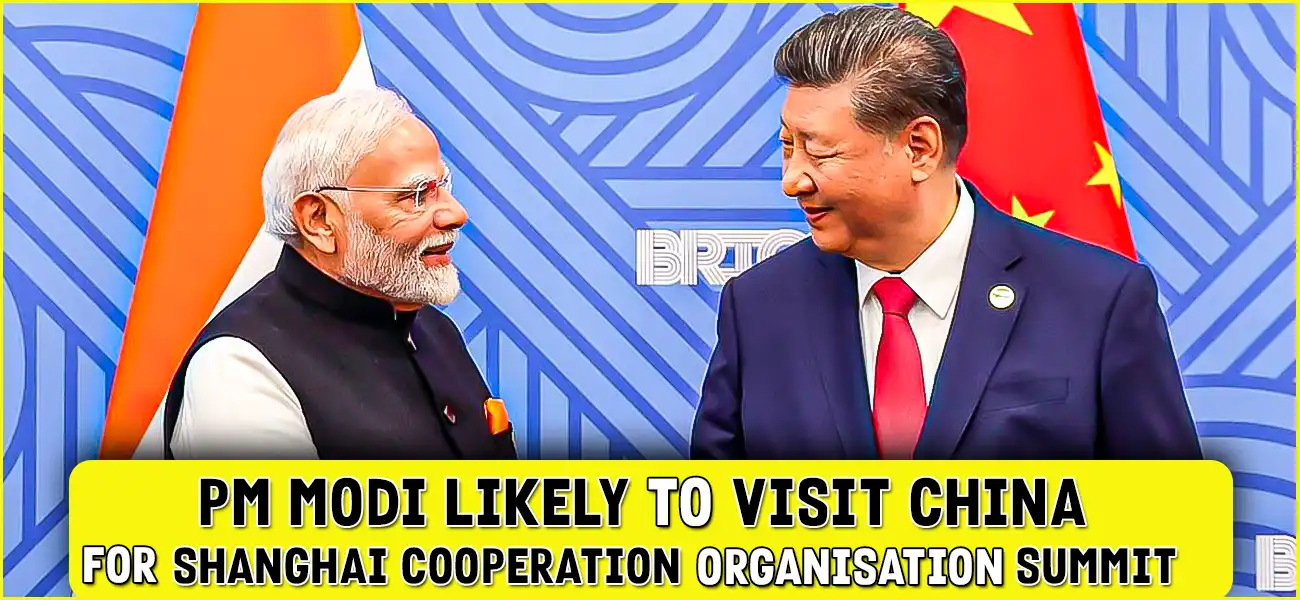
PM Modi Likely to Visit China for SCO Summit, First Trip in 7 Years Amid Thawing Ties
Prime Minister Narendra Modi is expected to visit China for the Shanghai Cooperation Organisation (SCO) Summit, scheduled to take place in Tianjin on August 31 and September 1. This will mark his first visit to China in seven years and comes as India and China take steps toward normalising ties after the long-standing military standoff on the Line of Actual Control (LAC).
Modi’s visit to China is likely to be paired with a trip to Japan, where he is expected to meet Prime Minister Shigeru Ishiba for the annual India-Japan bilateral summit. Both visits highlight India’s ongoing diplomatic engagements in Asia, focusing on regional security and economic cooperation.
The last time PM Modi visited China was in 2018, which included an informal summit with Chinese President Xi Jinping in Wuhan and his participation in the SCO Summit in Qingdao. In 2019, Xi visited India for a second informal summit in an effort to smooth over tensions from the Doklam standoff. However, relations took a dramatic turn for the worse following violent clashes in Ladakh’s Galwan Valley in June 2020, which resulted in the death of 20 Indian soldiers and at least four Chinese troops.
After years of tension, both nations reached a significant agreement on October 21, 2024, to disengage at the LAC. This development was closely followed by a meeting between Modi and Xi in Kazan, Russia, where they agreed to reactivate key diplomatic channels and mechanisms to rebuild trust and address boundary disputes.
A potential bilateral meeting between Modi and Xi during the SCO Summit could address key matters such as LAC de-escalation, resumption of direct flights, reopening of trade points, and the revival of cultural and people-to-people exchanges.
Recent months have seen renewed engagement between the two countries, with meetings involving foreign ministers, defence officials, and national security advisors. Notable outcomes include the resumption of the Kailash Mansarovar Yatra and reinstatement of tourist visas for Chinese nationals.
Despite these positive steps, India remains cautious about several Chinese policies. These include Beijing’s assistance to Pakistan during recent India-Pakistan clashes, construction of a mega-dam on the upper Brahmaputra, and restrictions on rare earth and fertiliser exports. External Affairs Minister S. Jaishankar recently reiterated the need to resolve border issues and promote open trade during his July meeting with Chinese Foreign Minister Wang Yi.
However, there is some uncertainty regarding Modi’s visit to Japan, as Prime Minister Ishiba faces internal pressure to resign following consecutive electoral defeats. Despite the political turmoil, Ishiba has stated he will continue in office, which keeps the bilateral summit plans on track.
If confirmed, PM Modi’s visits to both China and Japan will signal a renewed focus on strengthening India’s regional partnerships and addressing longstanding diplomatic challenges.
Also Read Trump Doubles Tariffs on Indian Imports
